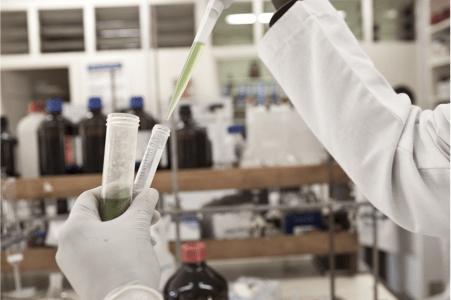EU approval not renewed for four key PPPs and other changes notified to WTO
- 16/12/2021
- Posted by: Gaetan Dermien
- Category: Afghanistan, Africa, Albania, Algeria, Andorra, Angola, Anguilla, Antigua and Barbuda, Argentina, Armenia, Aruba, Australia, Austria, Azerbaijan, Bahamas, Bangladesh, Barbados, Belarus, Belgium, Belize, Benin, Bermuda, Bhutan, Bolivia, Bosnia and Herzegovina, Botswana, Brazil, Bulgaria, Burkina Faso, Burundi, Cambodia, Cameroon, Canada, Cape Verde, Caribbean, Central African Republic, Chad, Chile, China, Colombia, Comoros, Cook Islands, Costa Rica, Côte d'Ivoire, Country, Croatia, Cuba, Cyprus, Czech Republic, Democratic Republic Of The Congo, Denmark, Djibouti, Dominica, Dominican Republic, Ecuador, Egypt, El Salvador, Equatorial Guinea, Eritrea, Estonia, Eswatini, Ethiopia, Faroe Islands, Federated States of Micronesia, Fiji, Finland, France, French Guiana, French Polynesia, Gabon, Gambia, Georgia, Germany, Ghana, Greece, Greenland, Grenada, Guadeloupe, Guam, Guatemala, Guinea, Guinea-Bissau, Guyana, Haiti, Headline, Honduras, Hong Kong, Hungary, Iceland, India, Indonesia, Iran, Iraq, Ireland, Israel, Italy, Jamaica, Japan, Jordan, Kazakhstan, Kenya, Kiribati, Kuwait, Kyrgyzstan, Latvia, Lebanon, Lesotho, Liberia, Liechtenstein, Lithuania, Luxembourg, Macao, Madagascar, Malawi, Malaysia, Maldives, Mali, Malta, Marshall Islands, Martinique, Mauritania, Mauritius, Mayotte, Mexico, Monaco, Mongolia, Montserrat, Morocco, Mozambique, Myanmar, Namibia, Nauru, Nepal, Netherlands, New Caledonia, New Zealand, News, Nicaragua, Niger, Nigeria, Niue, Northern Mariana Islands, Norway, Oman, Pacific, Pakistan, Palau, Panama, Papua New Guinea, Paraguay, Peru, Philippines, Poland, Portugal, Puerto Rico, Qatar, Republic of Korea, Republic of the Congo, Réunion, Romania, Russian Federation, Rwanda, Saint Helena, Saint Kitts and Nevis, Saint Lucia, Saint Vincent and the Grenadines, Samoa, San Marino, Sao Tome and Principe, Saudi Arabia, Senegal, Serbia and Montenegro, Seychelles, Sierra Leone, Singapore, Slovakia, Slovenia, Solomon Islands, Somalia, South Africa, Spain, Sri Lanka, Sudan, Suriname, Sweden, Switzerland, Syria, Taiwan, Tajikistan, Tanzania, Thailand, Timor-Leste, Togo, Tokelau, Tonga, Trinidad and Tobago, Tunisia, Turkey, Turkmenistan, Tuvalu, Uganda, Ukraine, Uncategorized, United Arab Emirates, United Kingdom, United States, Uruguay, Uzbekistan, Vanuatu, Venezuela, Vietnam, Yemen, Zambia, Zimbabwe

| Key points Famoxadone is no longer approved within the European Union (EU) as of September 2021. EU approval was not renewed for acrinathrin, prochloraz and indoxacarb and will expire at the end of December 2021. The EU has also notified the World Trade Organization (WTO) of its intention to adapt the conditions of approval of sulfoxaflor. How will ACP producers/exporters be affected? What should ACP producers/exporters do now? COLEACP will keep you informed as soon as more information becomes available. |
The European Commission (EC) has recently issued notifications of changes to plant protection product (PPP) approvals within the European Union (EU). Approval was not renewed for four (4) PPPs that are important to African, Caribbean and Pacific (ACP) horticulture: famoxadone, prochloraz, acrinathrin and indoxacarb. The EU also notified the World Trade Organization (WTO) of its intention to change the conditions of approval of sulfoxaflor, limiting its use to permanent greenhouses only.
In this update, ‘key active substances’ refers to those used/registered in one or more ACP country on horticultural crops that are frequently exported regionally or internationally. While COLEACP makes every effort to provide comprehensive information about EU PPP regulatory changes, it is possible that some PPPs or crops relevant to you are not included in our list of key substances/crops. We recommend that you review the following section, which gives details on all changes in 2021, to check for any others that could affect you. If you see any PPP that you use on crops for export to the EU in the lists below, we recommend that you check the regulation itself using the link provided.
Famoxadone
Famoxadone is a fungicide used to control a broad spectrum of plant pathogenic fungi, including downy mildew and blights (alternaria leaf blight, anthracnose, downy mildew, phytophthora blight), for example on potatoes, tomatoes, salad crops, peppers, cucurbits and grapes.
On 20 August 2021 the EC published Commission Implementing Regulation (EU) 2021/1379, setting the date for the expiration of approval of famoxadone in the EU to 10 September 2021.
It is expected that the EC will lower the MRLs of this substance at the end of the grace period. However, no information has been published by the EC yet. Updated information will be issued as soon as it becomes available.
Acrinathrin and Prochloraz
- Acrinathrin is a pyrethroid ester insecticide and acaricide effective against a range of phytophagous mites and other insects (psyllids, two-spotted spider mites, thrips, leafminers, aphids), for example on potatoes, tomatoes, and French and runner beans.
- Prochloraz is a fungicide active against a wide range of diseases (anthracnose, dothiorella complex, stem-end rot, eyespot) affecting cereals, field crops, fruit, vegetables and many other crops.
On 6 September 2021 the EC published Implementing Regulation (EU) 2021/1450, setting the date for the expiration of approval of acrinathrin and prochloraz in the EU to 31 December 2021 (i.e. earlier than the previous regulation).
It is expected that the EC will lower the MRLs of these substances at the end of the grace periods. However, no information has been published by the EC yet. Updated information will be issued as soon as it becomes available.
Indoxacarb
Indoxacarb is an insecticide for use on a wide range of crops to control certain Lepidoptera, cockroaches and ants (beet armyworm, fire ants, cockroaches, caterpillars), for example on cotton, brassicas, sweetcorn, lettuce, fruiting vegetables, and fruits including apples, pears, cherries and mango.
On 29 November 2021 the EC published Commission Implementing Regulation (EU) 2021/2081, setting the date for the expiration of approval of indoxacarb in the EU to 20 December 2021.
It is expected that the EC will lower the MRLs of this substance at the end of the grace period. However, no information has been published by the EC yet. Updated information will be issued as soon as it becomes available.
All PPP approval changes introduced in 2021
In addition to the changes presented above, please note in particular the following changes to the list of candidates for substitution (CfS):
- etoxazole was renewed from 1 February 2021;
- propoxycarbazone was deleted from the list of CfS since 9 August 2021; and
- cypermethrine renewal was notified to the WTO on 30 July 2021.
If you require additional information, or face particular problems as a result of these changes, please contact COLEACP at: network@coleacp.org.
All PPP status changes introduced in 2020
Table 2 presents a review of PPP status changes introduced in 2020. If you require additional information, or face particular problems as a result of these changes, please contact COLEACP at: network@coleacp.org.
Early notification of approval change
The World Trade Organization (WTO) Technical Barrier to Trade (TBT) notifications advise that an active ingredient is subject to a proposed non-renewal or modification of condition of approval for use in the EU (usually linked to human or environmental risks). This is not necessarily indicative of the final EU decision, as further Committee work is done by the EC and EU Member States after notification, which can change the proposal.
The draft regulation should be notified to the WTO Technical Barriers to Trade Information Management System (TBT IMS) for a commenting period of 60 days.
The publication of the definitive regulation may take a significant period of time after the WTO consultation has been completed. However, this is an opportunity to become informed in advance on foreseen regulation changes and ensure a smooth transition when the new text comes into force (early preparation). It is also the opportunity to submit concerns on potential difficulties (trade barriers) related to the proposed changes. For WTO member countries, comments can be submitted via their National Notification Authority.
Sulfoxaflor
Note that since the latest update, the EU has notified its intention to change the conditions of approval of sulfoxaflor due to potential risks for pollinators and to restrict the approval to uses in permanent greenhouses only. Following restriction of the approval, separate legal action will likely be taken on maximum residue levels.
This monitoring was carried out within under the Fit For Market SPS programme. Fit For Market SPS is a COLEACP programme, funded by the European Union within the framework of development cooperation with the Organisation of African, Caribbean and Pacific States (OACPS).

![EU and GB approval changes (January-May 2024) 9-FFM+-[ENG]](https://news.colead.link/wp-content/uploads/2024/06/9-FFM-ENG-150x150.jpg)


